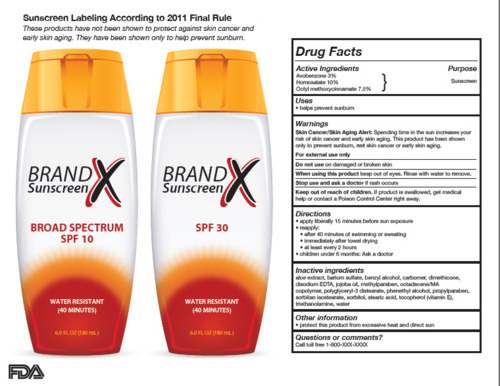Given that school is out until September, the amount of time spent outdoors will automatically increase and for many wearing sunscreen lotion may be taboo. However, in Trinidad and Tobago as with other parts of the Tropics one can safely say, applying sunscreen before heading out the house is slowly becoming a booming trend. More and more people can be seen applying and re-applying sunscreen while out and about. Nevertheless, whether you are new to sunscreen or a frequent user please be aware that as of last month (June 2012), non-prescriptive/over the counter sunscreens have undergone a number of changes, especially the ones marketed in the United States of America (USA/US). Commissioning these changes is the U.S. Food and Drug Administration (FDA) for reasons relating to consumer safety, SPF (Sun Protection Factor) protection and other labelling/misleading claims.
Before you apply your sunscreen or purchase a new bottle of sunscreen take a look at some of the key changes made:
① The type of protection offered must be clearly identified on the bottle/product. The sunscreen should state whether it protects against skin cancer (UVA rays) or simply guards against sunburn (UVB rays) or does both. Alternatively, according to the American Academy of Dermatology, consumers can determine whether their sunscreen offers minimal protection by reading the label and looking for a general warning such as:
"This product has been shown only to help prevent sunburn, not skin cancer or early skin ageing” for example. As manufacturers are required by law to place a warning similar to that on the sunscreens label or be fined.
② Manufacturers are required to state clearly how much SPF protection their product offers. This should be expressed as an SPF valve or a Broad Spectrum value no more than 50. The FDA states very strongly, there is not sufficient data to show that products with SPF values higher than 50 provide greater protection for users than products with SPF values of 50 or lower. In other words, it is best to purchase a sunscreen that has an SPF value of 50 or less or a Broad Spectrum value of 50 or less. For the latter, simply re-apply the sunscreen more often if the SPF or Broad Spectrum value is less than 50.
③ Manufactures should refrain from overstating the effectiveness of their sunscreen through labelling claims such as "water-proof" or "sweat-proof" and/or "a sunblock." The term "water-resistant" is suggested as an appropriate labelling claim over "water-proof", once the sunscreen remains effective for 40 minutes or 80 minutes when swimming or sweating. The FDA declares "water-proof" or "sweat-proof" to be misleading claims because all sunscreens eventually wash off. Therefore, consumers should ignore sunscreens labelled water-proof, sweat-proof or sunblock, in favour for those with water-resistant claims. Please note sunscreens also cannot claim to provide sun protection for more than 2 hours without re-application or claim to provide immediate protection after being applied (for example- "instant protection") without submitting data to support these claims and obtaining FDA approval.
④ Manufactures are required to list a standard "Drug Facts" panel on the side or back of the container. This ensures that the consumer has a guide to the active & inactive ingredients, uses and directions on how to use the sunscreen appropriately. Here is an example:

In essence, as a consumer you can never have too much information although these changes are formatted for the US market, consumers outside of
the USA should take these changes under consideration before purchasing a brand
of sunscreen.
Links for the information mentioned in the article can be found:
3) Food and Drug Administration- Sunscreen FAQ

No comments:
Post a Comment